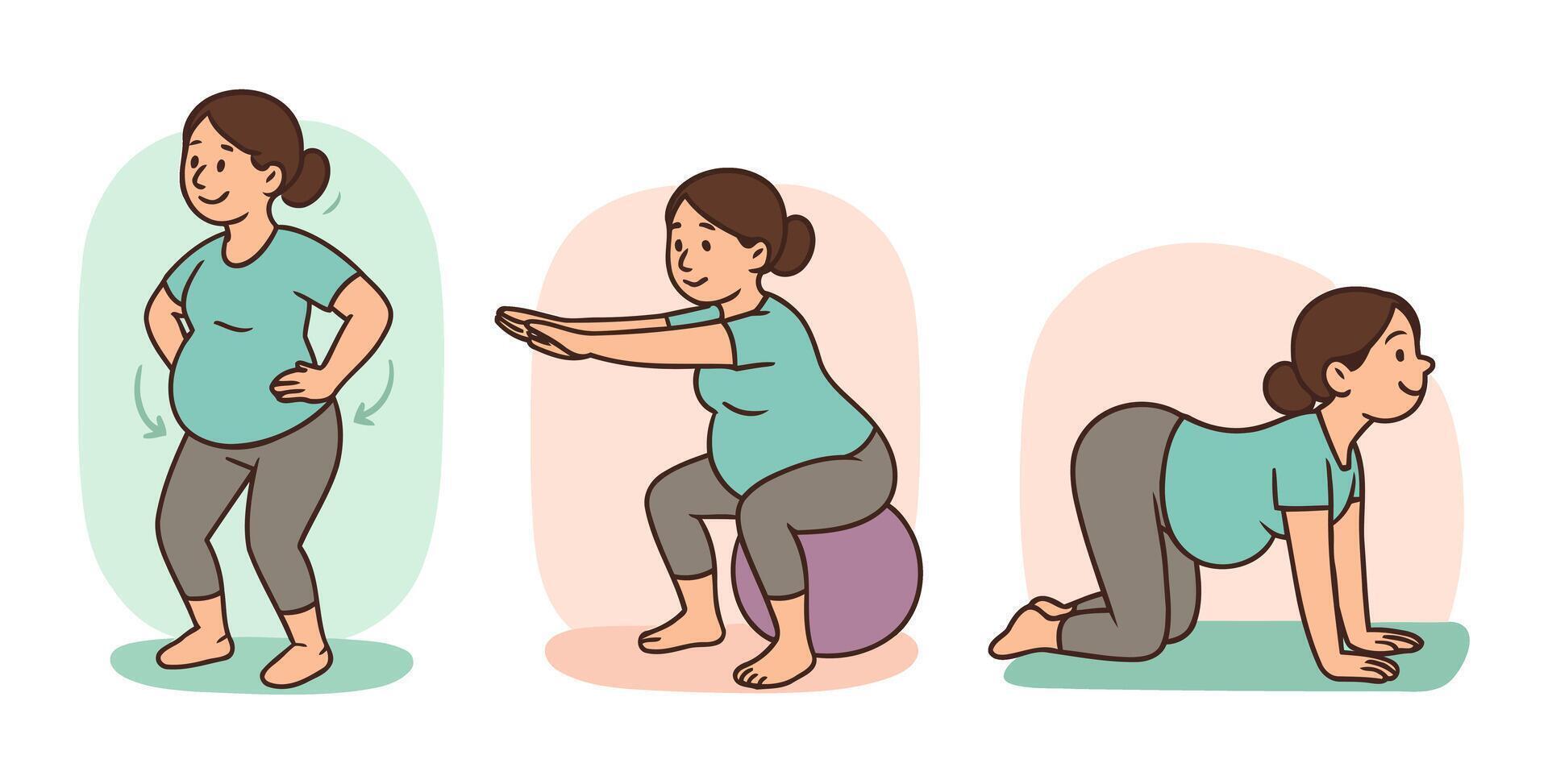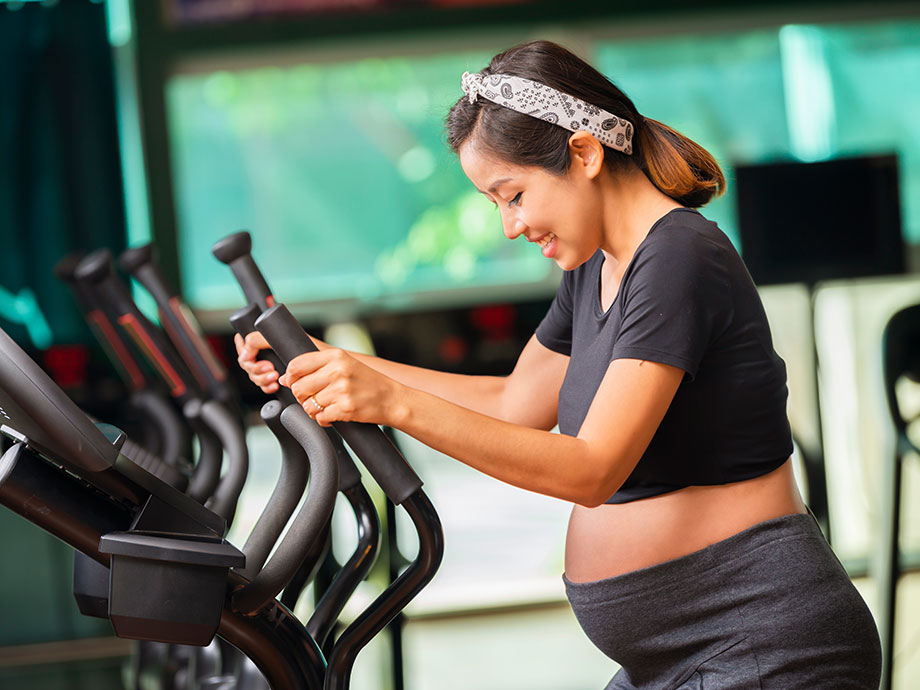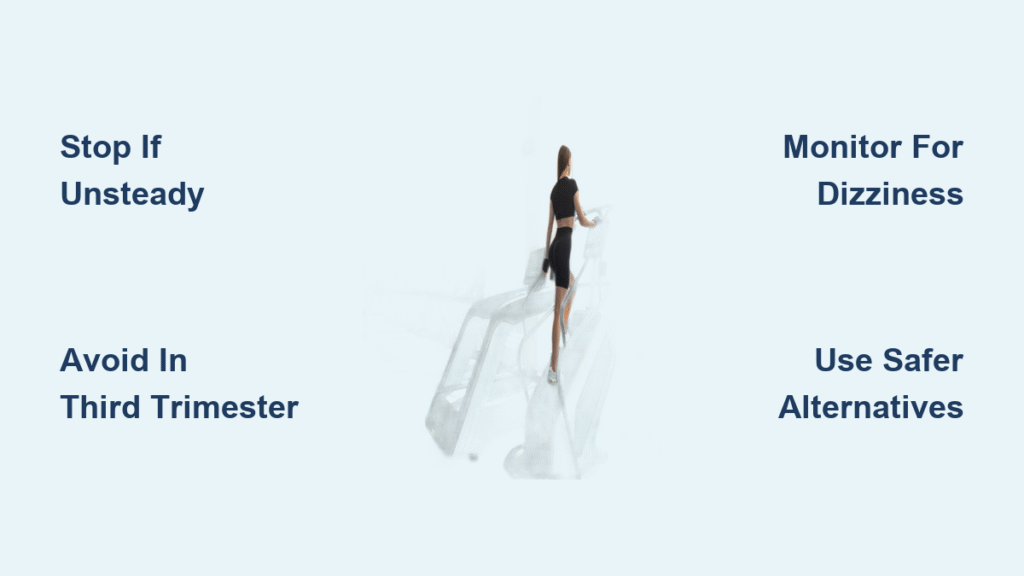Many pregnant women who regularly use stair climbers face uncertainty about continuing this exercise during pregnancy. As your body changes, questions arise about whether this popular cardio machine remains safe throughout your pregnancy journey. While stair climbers offer excellent cardiovascular benefits for non-pregnant individuals, the specific research on their use during pregnancy is notably absent from medical literature.
This guide addresses what we do and don’t know about stair climber use during pregnancy based on general exercise principles for expectant mothers. Most importantly, we’ll emphasize why your healthcare provider’s guidance should always override any general information you find online. Pregnancy is too individual to follow one-size-fits-all exercise recommendations, especially for equipment like stair climbers that significantly challenge balance and stability.
Why Specific Stair Climber Guidance Is Limited

The reality is medical research hasn’t specifically studied stair climbers during pregnancy. Unlike treadmills or stationary bikes, which have more general exercise studies applicable to pregnancy, stair climbers present unique balance challenges that haven’t been formally evaluated for pregnant users.
What Medical Experts Generally Recommend
Obstetricians typically advise pregnant women to prioritize exercises with lower fall risk as pregnancy progresses. The American College of Obstetricians and Gynecologists (ACOG) emphasizes that activities requiring good balance become increasingly challenging in later pregnancy due to shifting center of gravity, hormone-induced joint laxity, and changing weight distribution. This general principle applies to stair climbers, which demand significant balance control.
The Balance Risk Factor
Stair climbers require coordinated movement and stability that becomes more difficult as your pregnancy advances. In the second and third trimesters, your changing body mechanics make maintaining proper form on moving pedals increasingly challenging. Many healthcare providers suggest transitioning to more stable cardio options when you notice you’re gripping handrails more tightly than before or feeling less stable during your workout.
First Trimester Considerations
During early pregnancy when physical changes are minimal, some women may continue stair climber use with modifications. However, this decision must be made with your healthcare provider’s approval based on your individual pregnancy.
Energy Management Strategies
Early pregnancy fatigue often catches women off guard. If you choose to use a stair climber, significantly reduce your usual duration and intensity. What felt like moderate exertion pre-pregnancy may now feel strenuous due to increased blood volume and cardiovascular demands. Listen carefully to your body’s signals—nausea, dizziness, or unusual fatigue are signs to stop immediately.
Heart Rate Monitoring Importance
Rather than focusing on specific heart rate zones (which vary widely among individuals), use the “talk test” as your guide. You should be able to comfortably carry on a conversation while exercising. If you’re too breathless to speak in full sentences, you’re working too hard. Remember that your heart works harder during pregnancy to support both you and your baby, so perceived exertion matters more than numerical targets.
Second Trimester Adjustments

As your belly grows, your center of gravity shifts forward, making balance increasingly challenging on moving equipment like stair climbers.
Posture Awareness
Maintain an upright posture with shoulders back and down. Avoid leaning heavily on handrails, as this can create poor movement patterns and strain your upper body. If you find yourself pulling yourself up with your arms rather than using your legs, this is a sign the exercise has become too difficult. Consider switching to a more stable cardio option at this point.
Movement Quality Over Quantity
Focus on controlled, deliberate movements rather than speed or resistance. Quick, jerky motions increase fall risk. If you notice your form deteriorating—such as hiking your hips or taking uneven steps—it’s time to stop. The goal during pregnancy is maintaining fitness, not improving performance.
Third Trimester Safety Concerns
By the final months of pregnancy, most healthcare providers recommend avoiding stair climbers altogether due to significant balance challenges.
When to Stop Completely
Consider discontinuing stair climber use if:
– You need constant, firm grip on handrails for stability
– You feel unsteady at any point during the workout
– Your stride becomes uneven or awkward
– You experience any pelvic pressure or discomfort
Many women naturally transition away from stair climbers between 24-32 weeks as their bodies change, but this varies significantly based on individual factors.
Fall Risk Implications
Falls during pregnancy can have serious consequences, including placental abruption or preterm labor. The risk isn’t worth taking when excellent alternative cardio options exist that provide similar benefits with lower risk. Your safety and your baby’s safety must be the priority.
Critical Warning Signs During Any Exercise
Regardless of trimester, stop exercising immediately and contact your healthcare provider if you experience:
Immediate Red Flags
- Vaginal bleeding or fluid leakage
- Regular, painful contractions
- Chest pain or significant shortness of breath
- Dizziness or feeling faint
- Calf pain or swelling (possible blood clot signs)
Post-Exercise Monitoring
Pay attention to how you feel after exercising. Contact your provider if you notice decreased fetal movement, persistent abdominal pain, or contractions continuing more than 30 minutes after stopping exercise. These could indicate your body is under too much stress.
Safe Cardio Alternatives During Pregnancy

When stair climbers become inappropriate, several excellent alternatives maintain cardiovascular fitness with lower risk.
Lower-Risk Cardio Options
- Stationary cycling: Provides similar leg engagement with significantly better stability
- Elliptical trainer: Offers smooth motion with less balance demand than stair climbers
- Water aerobics: Reduces joint stress while supporting your changing weight
- Brisk walking: Simple, effective, and easily modified as pregnancy progresses
Strength Training Integration
Incorporate upper body and core stability exercises that support your changing posture. Focus on pelvic floor exercises, gentle back strengthening, and arm work that counterbalances the forward shift of your center of gravity.
Creating Your Personalized Exercise Plan
The most important step is developing a plan with your healthcare provider that considers your unique pregnancy.
Essential Pre-Exercise Questions
- Have you received medical clearance for exercise?
- Do you have any pregnancy complications that affect exercise safety?
- What’s your pre-pregnancy fitness level?
- How have you responded to exercise in previous pregnancies (if applicable)?
Documentation Strategy
Keep a simple exercise log noting:
– Type and duration of activity
– How you felt during and after
– Any unusual symptoms
– Your baby’s movement patterns
This documentation helps you and your provider identify patterns and make informed decisions about continuing or modifying your routine.
Hydration and Temperature Regulation
Pregnant women are more susceptible to overheating and dehydration, which can affect both mother and baby.
Hydration Protocol
Drink water consistently throughout the day, not just around workouts. Aim for pale yellow urine as your hydration indicator. During exercise, sip water every 15-20 minutes rather than waiting until you feel thirsty, as thirst lags behind actual hydration needs.
Temperature Management
Wear breathable, moisture-wicking clothing. Exercise in well-ventilated spaces, preferably during cooler parts of the day. Avoid hot, humid environments which increase overheating risk. If you feel unusually warm or stop sweating during exercise, stop immediately and cool down.
Post-Workout Recovery Practices
Recovery becomes increasingly important as pregnancy progresses.
Cool-Down Essentials
Gradually reduce intensity for 5-10 minutes before stopping completely. Follow with gentle stretching focusing on areas that tend to tighten during pregnancy—calves, hamstrings, and lower back. Avoid overstretching, as pregnancy hormones increase joint flexibility.
Monitoring Recovery Time
Note how long it takes your heart rate to return to near-normal. If recovery time significantly increases, this may indicate you’re pushing too hard. Pay attention to how your energy levels feel in the hours following exercise—persistent fatigue suggests you need to reduce intensity.
When Professional Guidance Is Essential
Certain pregnancy conditions require specialized exercise guidance or complete restriction of certain activities.
High-Risk Pregnancy Considerations
If you have conditions like placenta previa, cervical insufficiency, or preeclampsia, your provider may recommend avoiding all impact exercises. Multiple pregnancies often require earlier transition to lower-impact activities. Always follow your provider’s specific recommendations rather than general guidelines.
Physical Therapy Consultation
Consider seeing a pelvic floor physical therapist specializing in pregnancy. They can assess your individual biomechanics, provide personalized modifications, and help you maintain fitness safely throughout your pregnancy journey.
Key Takeaway: While stair climbers can be part of a pre-pregnancy fitness routine, the specific research on their safety during pregnancy is notably absent. General exercise principles for pregnancy emphasize minimizing fall risk as your body changes, which often means transitioning away from stair climbers, particularly in the second and third trimesters. Your healthcare provider’s guidance, based on your individual pregnancy, should always override any general information you find. Prioritize safety, listen to your body’s signals, and remember that maintaining fitness—not achieving new performance levels—is the appropriate goal during pregnancy. The best exercise routine is one that keeps both you and your baby safe while supporting a healthy pregnancy journey.




